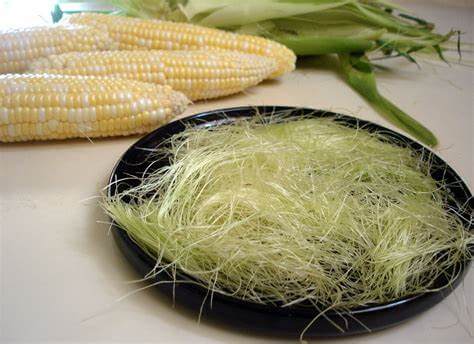Diabetes is not exclusive to human beings. Dogs of all ages are also likely to suffer from this disease.
Research shows that approximately 1 in every 300 dogs suffers from diabetes mellitus.
Specific dog breeds, such as Cairn Terriers, Beagles, Poodles, Dachshunds, Samoyeds, Keeshonds, and Australian Terries, have a higher susceptibility to this disease.
Also, unspayed females are more likely to develop diabetes than their male counterparts.
The good news, however, is that this incurable disease can be managed.
There are several natural strategies that dog owners can easily utilize to ensure their diabetic canine companions live healthy and happy life.
However, all these strategies require consistent veterinary guidance.
Ensure that you consult with a medical professional beforehand to ensure successful management of this condition.
Canine Diabetes
To understand how natural strategies help lower a dog’s blood sugar, it is important to first internalize the inner workings of the animal’s body.
At the heart of any dog’s digestive system is the pancreas.
This organ facilitates food digestion by producing insulin and digestive enzymes.
These enzymes, also known as pancreatic juices, break down starches, fats, and sugars.
Inversely, insulin regulates blood sugar levels.
Therefore, diabetes mellitus in dogs implies that the animal’s pancreas is incapable of effectively regulating the dog’s blood sugar.
This condition could be caused by reduced production of insulin or increased insulin resistance in the body.
Consequently, irregular blood sugar levels will cause the dog to eat, urinate, and drink excessively.
It is also very likely that the canine will lose or gain weight significantly.
In most cases, dog owners revert to the use of synthetic insulin analogs that balance out this diabetic effect.
However, this bio-artificial treatment is associated with a myriad of side effects including skin allergic reactions and hypoglycemia, a life-threatening condition.
As such, natural strategies for blood sugar regulation offer a safer and more reliable alternative.
Detailed below are some natural strategies that you should consider.
Natural Strategies to Lower a Dog’s Blood Sugar
1. Regular Exercise

Physical activity is an integral part of regulating a canine’s blood sugar level.
Regular exercise aids in insulin therapy as it increases blood flow, allowing the body to absorb more insulin.
More importantly, the dog gets to utilize a considerable amount of energy which helps the body break down glucose.
So, the most essential gift you can give your diabetic canine companion is introducing him to an exercise routine that will help him maintain healthy body weight.
However, dogs’ body mass index and weight vary depending on gender, breed, and age.
So, consult a veterinary professional beforehand to know the perfect weight and exercise limit for your dog.
You do not want to drain your dog’s energy level or cause him to lose too much weight.
Schedule moderate daily exercises with the help of your vet to ensure safe weight management without body exhaustion.
It is also advisable to exercise two or three hours after a meal.
Waiting for extended periods is likely to cause hypoglycemia as the dog’s blood sugar levels will drop to hazardous levels.
Lastly, avoid exercises that might bring about cuts or other injuries to the dog, most notably off-roading. This is because diabetic canines have a high susceptibility to non-healing injuries.
2. Low Fat, High Fiber Diet
Managing the dog’s diet is another fundamental tenet of natural blood sugar regulation.
Although different scholars hold different views on this issue, the general consensus is that a low-fat, high-fiber diet is the most effective means of lowering a dog’s blood sugar and managing his condition.
Reduced fat levels will prevent the accumulation of fat, thus allowing for healthy body weight.
Equally important is high fiber content as it helps decelerate the absorption of sugar into the bloodstream, preventing the dog from overindulging.
Steamed vegetables are a readily available and healthy source of fiber for dogs.
For maximum palatability, you can pair these vegetables with whole grains to add complex carbs and lean meat to meet the required protein quotient.
You may also want to check:
3. Acupuncture

It has been reported that acupuncture treatment helps in managing diabetes conditions in animals and human beings.
Among the main benefits of this massage therapy is that it increases blood flow in the body, thereby enhancing insulin absorption.
To conduct acupuncture at home, you need to know the specific acupressure points to massage.
In the head region, there is the ying tang point and two yang tang points.
The latter are sunken sections of the skull located on either side of the eyes, while the former is located at the centermost part of the dog’s forehead.
Using two fingers to gently massage these areas calms down the dog and increases blood flow to the head.
It is also advisable to massage the ears by rubbing the tip all the way to the base using your thumb and index fingers.
Another important acupressure target is the point on the dog’s back where the spine and the skull attach, commonly known as the G-14 or the gate of consciousness.
You are required to gently massage this region using your fingers. Ensure you work on both sides, as well as the top.
Lastly, you should also massage the underbelly in a gentle back-and-forth motion.
Ensure that you focus more on the heart-1, conception vessel, chest, and kidney-27 points. Other areas to massage include ankle joints, knee joints, the feet, and the Bai Hui point where the tail joint begins.
4. Fenugreek
This is a herbal plant, native to India, which is commonly used as a cooking spice.
It is very similar to sunflower seeds as their seeds can be consumed raw.
Research has shown that Fenugreek has a supportive effect on diabetic dogs as it reduces the blood’s sugar absorption rate.
In particular, defatted Fenugreek seeds reduce hyperglycemia in dogs.
It is advisable to regularly mix these seeds in the dog’s food for optimum effect.
Fenugreek seeds are available in grocery stores or online and they are very affordable.
5. Bitter Melon
Another natural herbal supplement that is beneficial to diabetic dogs is bitter lemon.
This African vegetable is rich in fiber, thus reducing the blood sugar absorption rate.
More importantly, it supports the production of insulin which also contributes to lower blood sugar levels.
However, you should limit your dog’s consumption of bitter lemon to at most 3 times weekly to avoid digestive upset.
6. Omega-3 Fatty Acids Supplements
In all living organisms, hyperglycemia and insulin resistance are proinflammatory (or promoting inflammation).
Fortunately, omega-3 fatty acids, such as DHA (docosahexaenoic acid) and EPA (eicosapentaenoic acid), are effective anti-inflammatory agents.
These acids also accelerate the rate at which body cells are able to take in glucose.
If you decide to try this strategy, one possible brand name that you can use to lower your dog’s blood sugar level is the ‘Dermapet’ Eicosaderm.
However, consult with a vet before giving your dog these supplements.
7. Corn Silk

As the name suggests, corn silk are the silky threads that are found growing on corn cobs.
These herbal fibers have anti-diabetic benefits as they may lower blood glucose levels in the bloodstream.
A 2009 study showed that corn silk extract has the potential to reduce hyperglycemia in mice on account of its ability to recover injured β-cells and increase insulin levels in the body.
But no study has been carried out specifically on dogs, so if you opt for this remedy, consult your vet first.
Feeding this herbal supplement to your dog is relatively easy though as all you are required to do is mix a few strands in each of the dog’s meals.
8. Antioxidants
Antioxidants help inhibit oxidative stress on the dog’s body.
They ensure body cells are performing at their optimum best, and this indirectly contributes towards the improved ability for the body to metabolize sugars.
It is, therefore, advisable to feed your dog a lot of anti-oxidant rich foods, such as carrots, blueberries, strawberries, steamed broccoli, and kale.
However, given that dogs are facultative carnivores, some of these foods should be given in moderation to avoid potential stomach upset.
9. Gymnema

Gymnema Sylvestre is popularly referred to as the ‘sugar destroyer’ since its leaves contain gymnemic acid, which is believed to effectively dull the taste of sugar.
The plant is thought to block fat and sugar absorption in the body, an effect which may be critical in the management of conditions like diabetes, obesity, and high cholesterol.
Gymnemic acid also offers support to pancreatic beta cells, thus ensuring glucose levels remain low.
It is particularly effective when given before a dog’s feeding time as it ensures that glucose levels don’t surpass unhealthy margins after a meal.
10. Turmeric
Another natural strategy to lower a dog’s blood sugar level is using turmeric regularly to prepare the pet’s meals.
This golden spice contains curcumin, which maintains normal blood sugar levels.
Daily consumption of turmeric can go a long way in preventing your dog from developing any of the diabetes variations.
Like any other dog supplement, ensure that you consult your vet before giving turmeric to your dog.
This is particularly important when it comes to turmeric because the herb is known to react with certain prescription medications.
11. Scheduled Eating

Lowering a dog’s blood sugar level is not only about the type of food he consumes.
It also involves managing the amount of food he eats and how often he feeds.
The conventional two-heavy meals daily system is very likely to spike the canine’s blood sugar given that the dog’s body is forced to digest a large number of nutrients at a go.
So, it is prudent to divide the pet’s caloric intake into small bits to space out his digestion process.
Devise a meal schedule whereby the dog will consume small amounts of food several times a day.
12. Monitor Glucose Levels
Lastly, using these natural strategies would be an absolute waste of time if you do not keep tabs of your dog’s blood sugar levels.
It is recommended that you conduct a blood glucose test every day at the same time and keep a log of the results.
Constant monitoring will help you know whether the strategies are working accordingly.
More importantly, it will help you identify any irregular spike or reduction in glucose levels, thus enabling you to seek emergency medical attention promptly.
You may also want to check: Homemade Diabetic Dog Treats: Diet Tips, Recipes & FAQ’s
Parting Thoughts
Other than regular conventional medicine, there are many more inexpensive, safer, and more convenient natural strategies that you can use to lower a dog’s blood sugar.
These natural strategies rarely cause side effects and are just as effective as their bio-artificial counterparts.
However, you should not self-prescribe these interventions.
Remember that different dogs react differently to different supplements.
So, always consult your vet before indulging in any of the aforementioned strategies.
As an Amazon Associate, we may receive a small commission from qualifying purchases but at no extra cost to you. Learn more. Amazon and the Amazon logo are trademarks of Amazon.com, Inc, or its affiliates.

